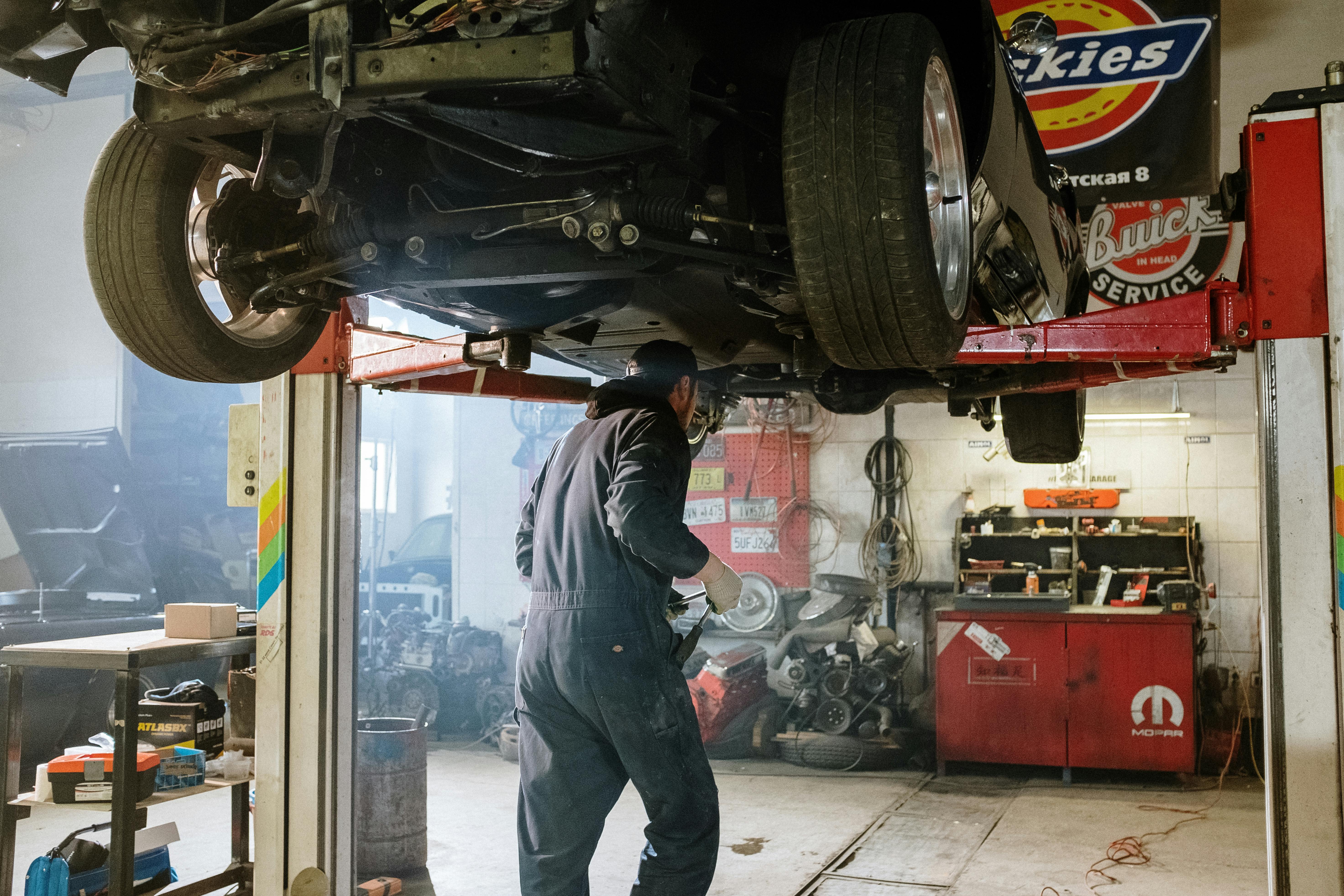Running an auto repair shop in 2025 means juggling more than oil changes and brake jobs. Between the technician shortage, no-show appointments, and scheduling chaos, the administrative side of shop management can drain as much energy as the actual repairs.
The numbers tell the story. The automotive industry needs nearly 500,000 new technicians over the next five years just to keep pace with demand. Meanwhile, the average auto repair shop deals with a 15-20% no-show rate for appointments. Add in the complexity of modern vehicles requiring specialized training, and you have a management challenge that no amount of wrenches can fix.
But here's what most shop owners miss: the solution isn't just about hiring more people or filling more bays. It's about managing the people and processes you already have in ways that actually work.
The Real Cost of Poor Auto Industry Scheduling
Most shop owners can tell you their labor rate and parts markup. Ask them what poor scheduling costs their business? That number is harder to pin down, even though it bleeds money every single week.
When auto industry scheduling breaks down, the ripple effects hit everywhere. A technician shows up for a shift but the expected job never arrives because the customer no-showed. That's lost labor hours. An urgent repair comes in but all your techs are already booked on jobs that could have been scheduled differently. That's a turned-away customer who won't return.
According to research on small business appointments, no-shows cost businesses significant revenue, with studies showing that 10-15% of appointments result in no-shows. For an auto shop averaging $100 per hour in labor and running 40 appointments per week, that 15% no-show rate translates to roughly $31,200 in lost annual revenue. Per bay.
But the scheduling problem goes deeper than missed appointments. Poor auto industry scheduling creates:
Technician downtime. Your most skilled tech sits idle for two hours because the morning job canceled and you couldn't fill the gap fast enough. That's billable hours walking out the door.
Customer frustration. Someone calls for an urgent repair and you can't fit them in for a week because your scheduling system doesn't show actual capacity. They go to your competitor who has better visibility into their schedule.
Burnout and turnover. When technicians don't have consistent work or get overwhelmed with back-to-back jobs without breaks, morale tanks. With 79% of automotive technicians already having thought about resigning and 69% reporting burnout, poor scheduling accelerates an already critical problem.
The Technician Shortage Isn't Getting Better
Let's talk about the elephant in every bay: you can't schedule technicians you don't have.
The U.S. Bureau of Labor Statistics projects 67,800 job openings annually for automotive technicians through 2033. The TechForce Foundation estimates demand for automotive technicians will exceed 471,000 between 2024-2028, with over 71,000 of those being replacement positions from retirements and turnover.
Translation: even if you could hire every new graduate from automotive programs nationwide, there still wouldn't be enough technicians to meet demand. The shortage is structural, not temporary.
This means shop management software and smart auto industry scheduling aren't nice-to-haves anymore. They're competitive advantages. When you can't add more technicians, you have to maximize the ones you have. That means:
Optimizing technician utilization. Knowing who's working on what, when they'll finish, and what's coming next ensures you're not paying skilled labor to stand around.
Cross-training flexibility. When you can see your full schedule, you can identify opportunities to train technicians on additional skills during slower periods, making your team more versatile.
Retention through better work-life balance. Technicians cite unclear schedules and unpredictable hours as major frustrations. According to WrenchWay's research, 40% of technicians say pay structure is the top issue that needs fixing, but 26% cite career advancement limitations as their biggest frustration. Better scheduling addresses both by creating consistent, predictable work that allows for skill development.
What Good Auto Repair Shop Management Software Actually Does
So what separates auto repair software that actually works from glorified appointment books?
The best shop management software treats scheduling as part of a connected system, not an isolated calendar. Here's what that looks like in practice:
Real-time capacity visibility. When a customer calls or books online, your system knows exactly which bays are available, which technicians have the right skills for the job, and how long similar repairs have historically taken. No more overbooking. No more turning away work you actually have capacity for.
Automated appointment reminders. The 15-20% no-show rate drops significantly when customers get text or email reminders. Automotive software with automated reminders makes this effortless. Some shops report reducing no-shows to under 5% just by implementing reminder systems.
Technician assignment and workload balancing. Good automotive scheduling software lets you assign jobs based on technician skill level, current workload, and estimated completion time. This prevents the common problem where one tech is slammed while another is idle.
Digital vehicle inspections integrated with scheduling. When technicians complete inspections on mobile devices and the results immediately sync with your scheduling system, you can quickly add approved work to the schedule without phone tag or delays. According to Torque360's data, strategic investment in appointment scheduling software can boost revenue by 30-45%.
Customer database and service history. When someone calls, your service advisor should instantly see their vehicle history, previous concerns, and upcoming maintenance needs. This speeds up scheduling and improves the customer experience.
One case study from a German Volvo dealer found that implementing auto repair shop management software saved 25% of working hours. For a typical shop, that translates to reclaiming hours each week that can be redirected toward actual repairs instead of administrative chaos.
Beyond Scheduling: The Connected Shop
The best shop management software does more than schedule appointments. It connects every part of your operation so information flows automatically instead of requiring constant manual updates.
When a customer approves additional work during an inspection, that work should automatically appear on the technician's queue and update the schedule. When parts arrive, the scheduler should be notified so jobs can proceed. When a tech finishes early, the system should suggest which waiting job to start next based on parts availability and customer priority.
This connected approach solves one of the biggest frustrations in auto industry scheduling: the gap between plan and reality. Schedules that exist only on paper or in static calendars become outdated the moment something changes. Automotive software that updates in real-time keeps everyone working from the same information.
Cox Automotive's 2023 Service Study found that 48% of vehicle owners were frustrated with at least one aspect of their dealership service experience, with service taking longer than expected and struggles to schedule appointments being top complaints. Independent shops can gain market share by solving these exact problems with better technology.
Making It Work in Your Shop
The gap between knowing you need better auto repair shop management software and actually implementing it can feel overwhelming. Here's how successful shops make the transition:
Start with the pain point that costs you the most. Is it no-shows? Start with automated reminders. Is it technicians waiting for parts? Focus on inventory integration. Is it overbooking causing customer complaints? Prioritize capacity planning features. You don't have to solve everything at once.
Get your service advisors bought in first. They're the ones who will use the scheduling system most. If they see it making their jobs easier, they'll champion it to everyone else.
Track the metrics that matter. Before implementing new automotive software, know your current no-show rate, average time to schedule an appointment, and technician utilization rate. After implementation, measure again. The data will show whether the investment is working.
Use it consistently or don't use it at all. The shops that fail with new software are the ones that keep parallel systems "just in case." Commit to the new auto repair software and train everyone thoroughly.
According to industry data, 60% of auto repair shops now use cloud-based management software and 55% offer online appointment scheduling. The shops thriving in today's market aren't just using technology - they're using it strategically to solve specific operational problems.
Making Technician Scheduling Effective
The automotive industry faces headwinds: a severe technician shortage, increasingly complex vehicles, and customers with higher expectations than ever. You can't control most of those factors. But you can control how efficiently you use the resources you have.
Good auto industry scheduling through capable shop management software won't magically produce more technicians or make difficult repairs easier. What it will do is eliminate the self-inflicted wounds: the no-shows, the scheduling conflicts, the idle technicians, the turned-away customers, the administrative time-suck that keeps you from actually running your business.
The auto repair shops that thrive over the next decade won't be the ones with the most bays or the lowest labor rates. They'll be the ones that figured out how to maximize what they have through smarter systems and better processes. That starts with taking auto industry scheduling seriously and investing in automotive software that actually solves problems instead of creating new ones.








